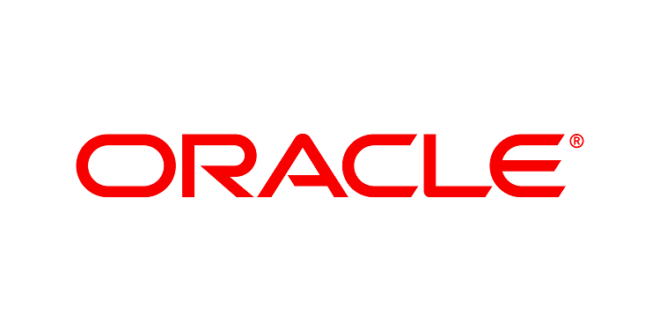In the modern business environment, many mid and large-sized organizations use the Oracle database as a component of their overall IT ecosystem and most of them use the traditional on-premise database version. With increasing business volumes, organizational data also grows exponentially, thereby stretching the existing database infrastructure to the limits. It also requires higher storage and processing powers and better database management, all of which increase overall costs. Hence, companies find it difficult to run databases at affordable costs while having to keep up with the complexities of database management.
One of the key solutions to this issue is to buy into the benefits of migrating applications to the cloud, but before that, it is necessary to evaluate which platform is ideal for fueling growth. In short, it has to be assessed which platform will help to improve performance and other operational benefits at the most suitable cost structure. One of the most used alternatives for on-premises databases is Oracle to SQL Server migration.
Here are the features and functions of the Oracle database and Microsoft SQL Server and the key differences between the two.
Oracle Database
The Oracle database enables you to store and retrieve data quickly and efficiently. Here are some of the features.
- ACID-compliant database assuring high data reliability and integrity
- Users can divide a large table into different segments and store each piece separately in selected storage devices because of its unique partitioning feature.
- Oracle Recovery Manager tool enables database administrators to carry out incremental database back-ups and point-in-time recoveries.
- The database has a logical data structure for storing data to help users interact with the database wherever the data might be stored physically.
- Oracle is a cross-platform database that runs on various hardware across operating systems like Unix, Windows Server, and GNU/Linux.
Before going into the key differences of database Oracle to SQL Server migration, the features of Microsoft SQL Server will be seen now in some detail.
Microsoft SQL server
Microsoft SQL Server is an RDMS (Relational Database Management System). It has been developed by Microsoft for creating a database for storing and retrieving data whenever needed by other applications. All RDMS like Informix, MySQL, Oracle, Postgres, Sybase, and of course SQL Server use SQL as the standard database language.
- SQL Server permits access to data in RDMS
- Users have the flexibility to describe, define, and manipulate data in a database.
- Other languages can be embedded in the database through SQL modules, pre-compilers, and libraries.
- Users can create and drop tables and databases, view stored procedures and functions in a database, and set permissions on tables, views, and procedures.
These are the functions of database Oracle and SQL Server.
Key differences between Oracle and SQL Server
These are as follows. There are several points where one score over the other and vice versa.
- Oracle can operate on a wide range of platforms while the SQL Server may be installed exclusively on the Microsoft Windows Server only.
- Oracle database supports star query optimization while the same is not provided in SQL Server.
- Oracle does not change values before commit while they are changed in SQL Server before commit.
- While Oracle supports many schemas with the instance, SQL Server offers schemas within each database.
- Oracle offers full, incremental, and differential database backups while SQL Server supports full, partial, and incremental backups only.
Based on these features, what are the steps for database Oracle to SQL Server migration?
Migrating Database Oracle to SQL Server
For smooth and seamless Oracle to SQL Server migration as well as to Azure Synapse Analytics and Azure SQL Database, the SSMA or the SQL Server Migration Assistant (SSMA) for Oracle is used. SSMA for Oracle is required to review database objects and data, move database objects, and access databases for migration but SYS and SYSTEM Oracle schemas cannot be migrated.
The following steps have to be followed for Oracle to SQL Server migration.
- After a new SSMA project is created, project conversion, type mapping, and migration options have to be implemented.
- The Oracle database server and an instance of the SQL Server have to be connected.
- The Oracle database schemas are required to be mapped to SQL Server database schemas.
- Next, the Oracle database schemas have to be converted into SQL Server schemas.
- The converted database objects are to be loaded into SQL Server either by saving a script and running it in SQL Server or by synchronizing the database objects.
- Finally, migrate data Oracle to SQL Server and update all database applications.
This process for Oracle to SQL server migration can also be used to migrate Oracle databases to Azure Synapse Analytics and Azure SQL databases.
Migration Methods – One-shot and Phased
In a one-shot method, the entire migration is completed at a time. The existing systems have to be shut down as otherwise, any transactions taking place after the final backup will not be moved to the new location. While this may be a very effective and robust method, in many cases a complete system shutdown is not always possible. If this method is adopted, multiple test executions have to be necessarily done in advance to ensure that everything goes off without a hitch on migration day.
In the phased migration approach, the first step focuses on data from Oracle to SQL Server migration that either does not change or rarely does so. In the next phase, migration is done at specified intervals that take care of any incremental data since the last run.
Summing up, you should be proficient in both databases to make the migration a smooth affair.
 HammBurg Be informed with latest news, reviews, entertainment, lifestyle tips, and much more.
HammBurg Be informed with latest news, reviews, entertainment, lifestyle tips, and much more.




